With a heavy heart I waited for Ronnie to pick me up for the drive from Salmon to Chief Joseph Pass. The nearby Moose Creek fire had expanded to over 20,000 acres and two helicopter pilots died in a crash while fighting the wildfire. My complaints of breathing smoke and watery eyes were trivial. The effort to hike on the first day back on the trail was easy compared to the tough and dangerous work done by fire crews.
July 22: 18 miles, 2130′ ascent
July 23: 14.7 miles, 2,640′ ascent
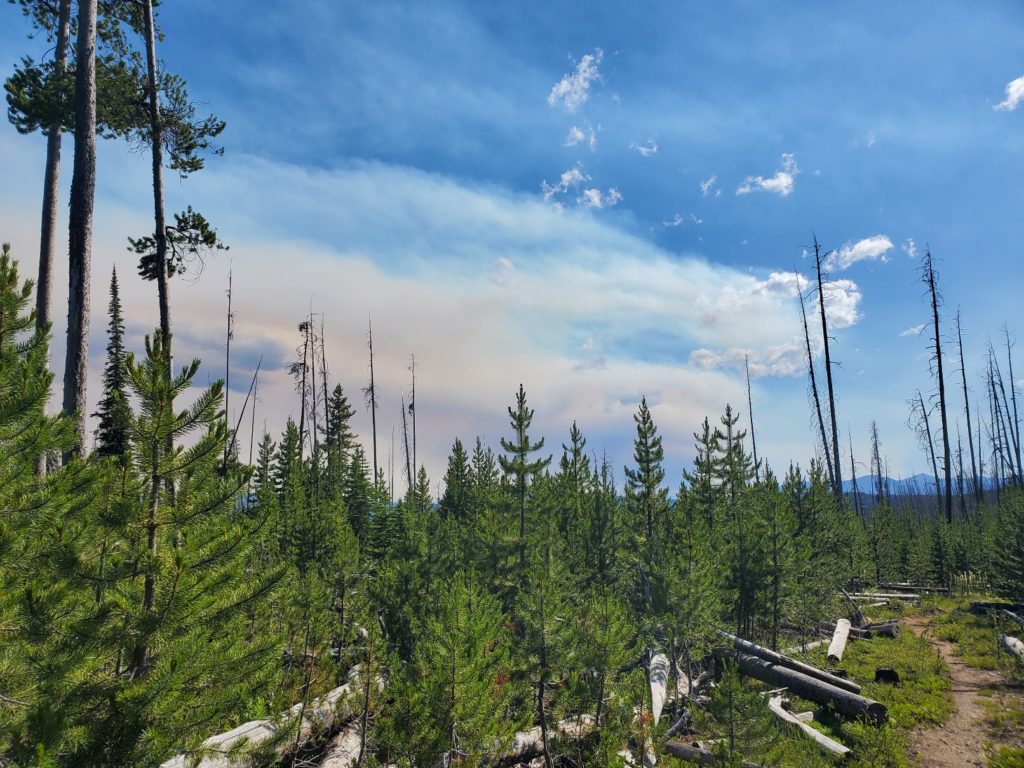
Along the first 19 miles I planned to hike from Chief Joseph Pass there was no on-trail water sources. However, another hiker posted a comment on the Far Out app that a small stream was flowing just 180 feet from the trail. Just before reaching the bushwack to collect the water I met southbound thru-hiker Shoo from Japan. Shoo was not aware of the many waterless miles he would suffer by not filling his water bottles on his way to Chief Joseph Pass. Perhaps the translations on his app were not complete or accurate. Moreover, he had a badly injured ankle that was slowing his pace. Together, we located the off-trail stream flowing cold and clear. After expressing his gratefulness Shoo continued south while headed north with 3 liters of water.
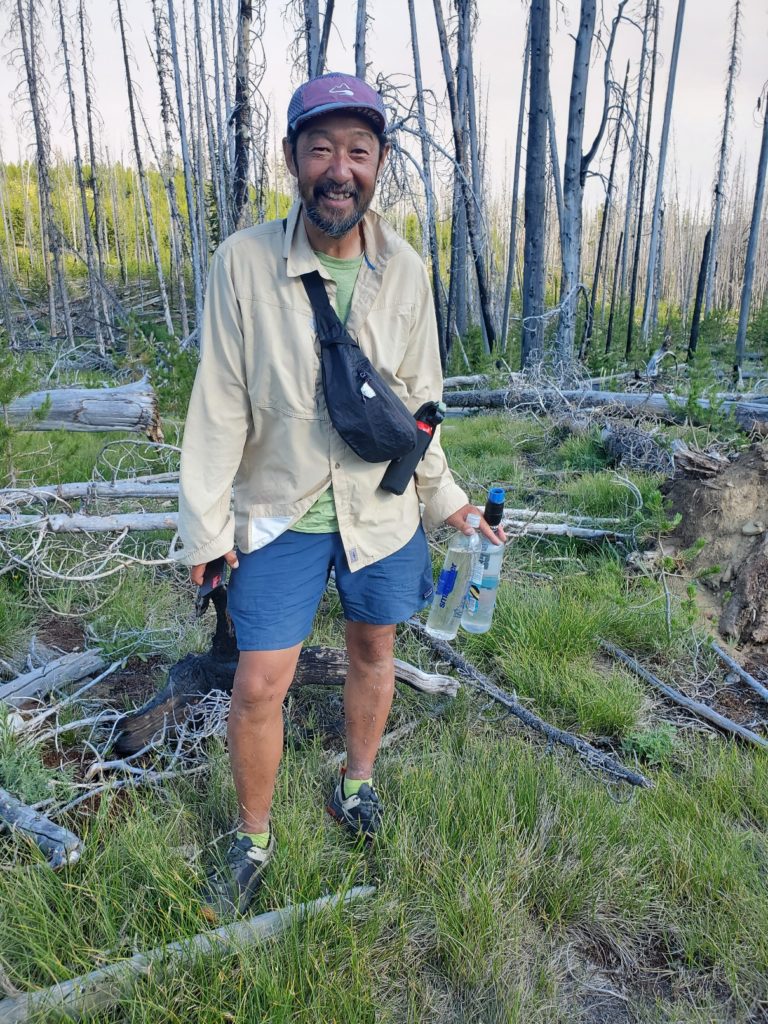
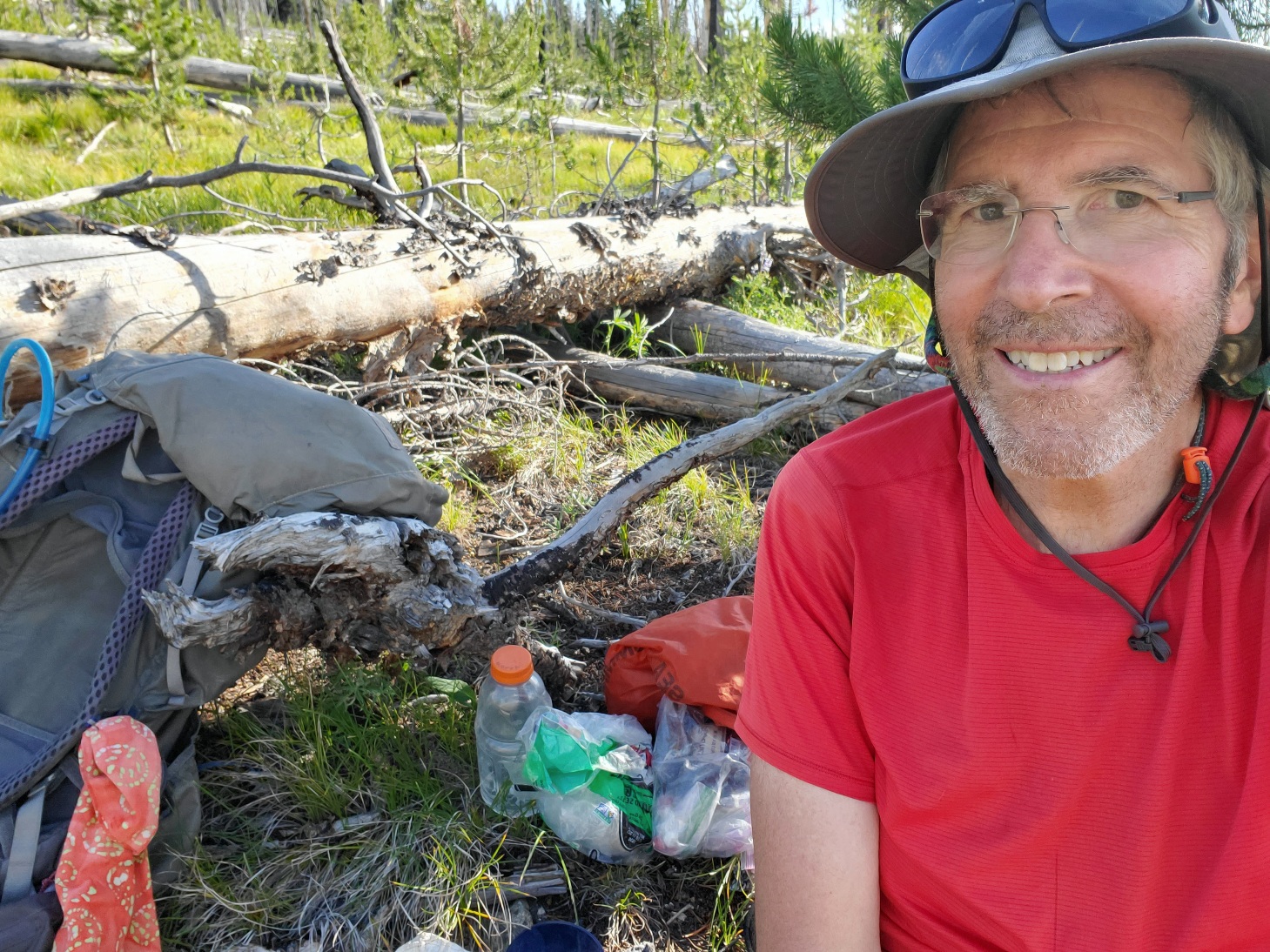
It was hard to stay positive the next day because my energy on the trail was so low. During my recent zero day in Salmon I did not “carbo-load” enough, and this must have caused me to feel so depleted of energy. I needed more nourishment now, but the food in my backpack was limited. I had a similar problem on the Appalachian Trail in December while hiking through the Smokies. That time I yogied some food from a large group at a campsite I (in exchange for supplying one of them with some ointment to treat a wound). This time in Montana I had to dip into my limited supply of dinners for a late lunch and just hope I would feel better the next day.
Most of the CDT I hiked that afternoon was through one of the recent burn areas that literally killed the forest. Inside the Anaconda-Pintler Wilderness I had hoped to enjoy the shady, lush live forest that I remember from the first time I visited the area in 1998. I was happy to see small and very young trees growing among the more numerous dead trees felled during the fires. I was forced to carefully climb over, crawl over or step around the now horizontal logs scattered like Lincoln Logs spilled out of a box. In the absence of a tree canopy I often yearned for patches of shade where I could rest and cool off. Instead, I pressed on and up to a flat plateau on Buck Ridge for a place to camp. Selecting a campsite in an expansive burn area was tricky. I did not want to sleep near dead, unstable trees that might topple if the wind were to blow strong during the night. The fires years ago had scorched the soft, moist forest floor that make nice places to erect a shelter. I was too fatigued to push on to a living forest. After a diligent search I found an acceptable patch of ground that was the least of poor options.
The sunset glowed fire-in-the-sky made possible by the smoke from the Moose Creek Fire. As I tried to sleep I heard the sound of animals outside my tent. It was no surprise. The fresh prints of Elk dotted the ground near my camp. Considering the depressing state of the forest it was a calming and restorative moment that inspired optimism for the morning.
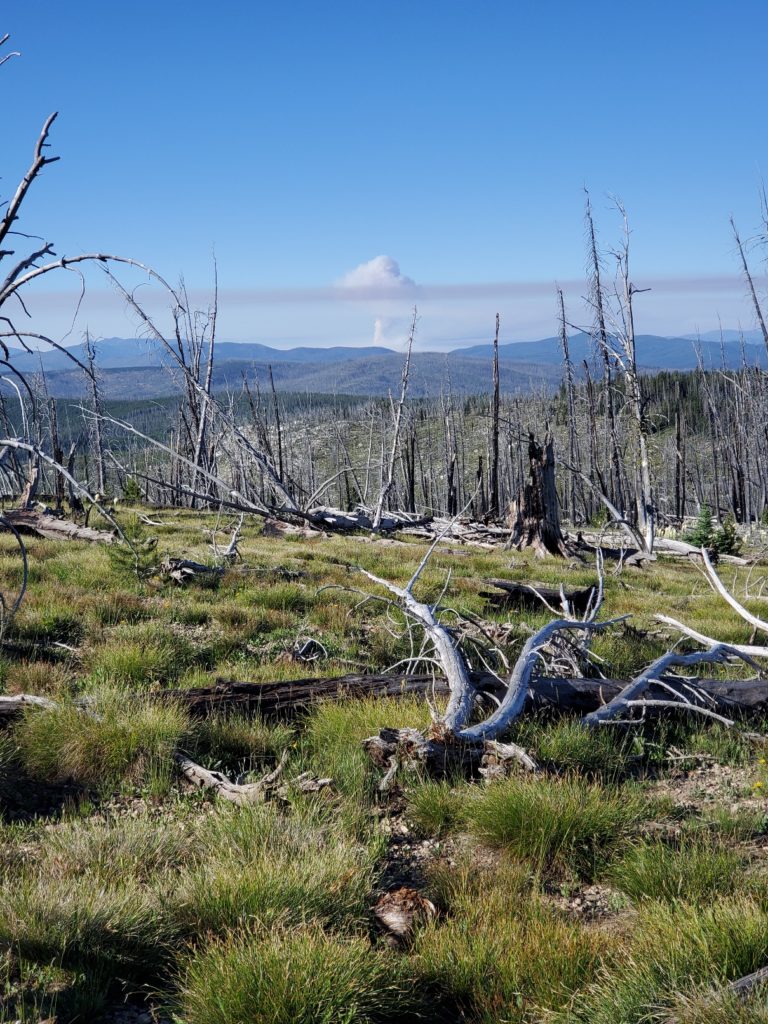
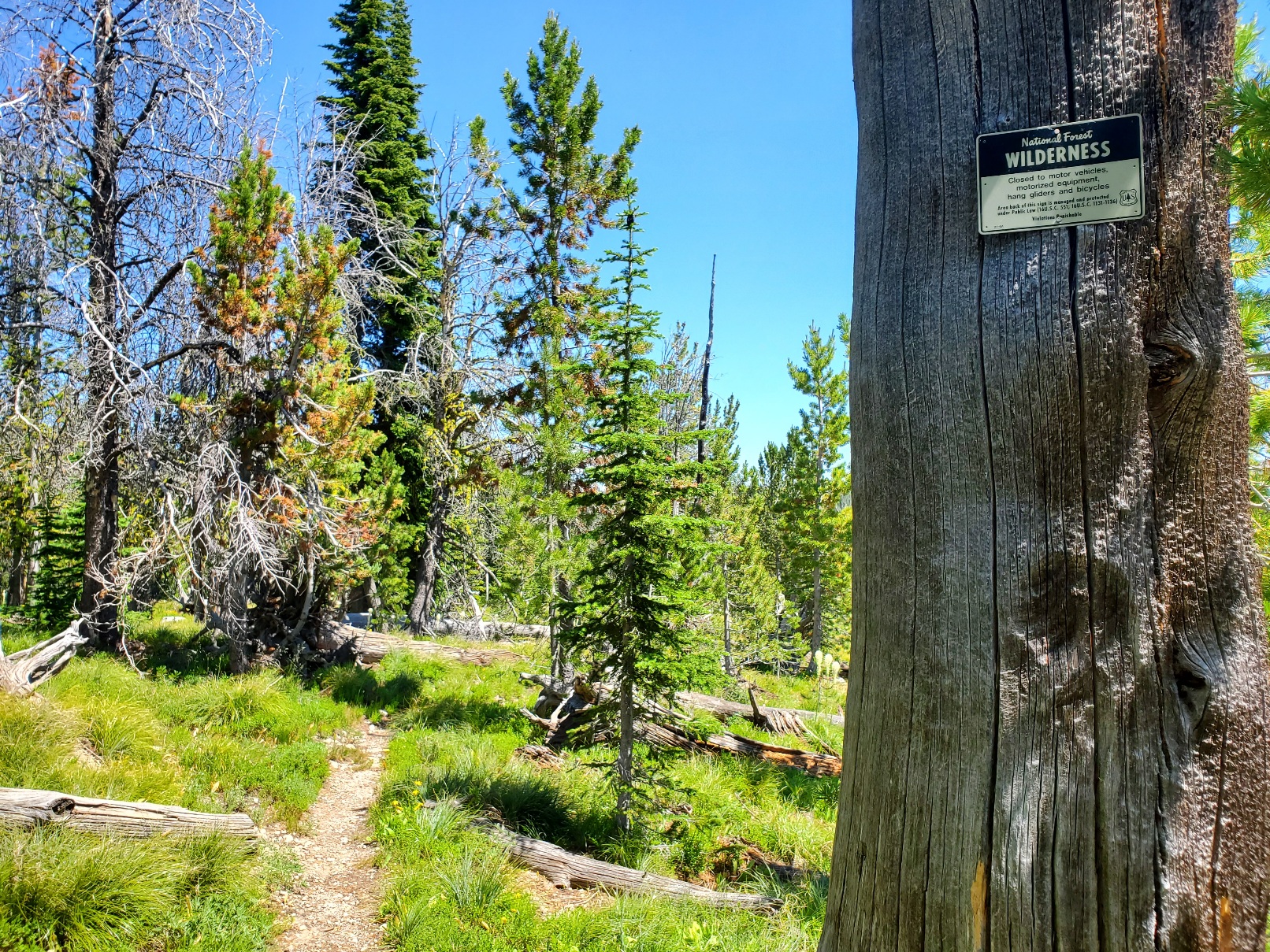

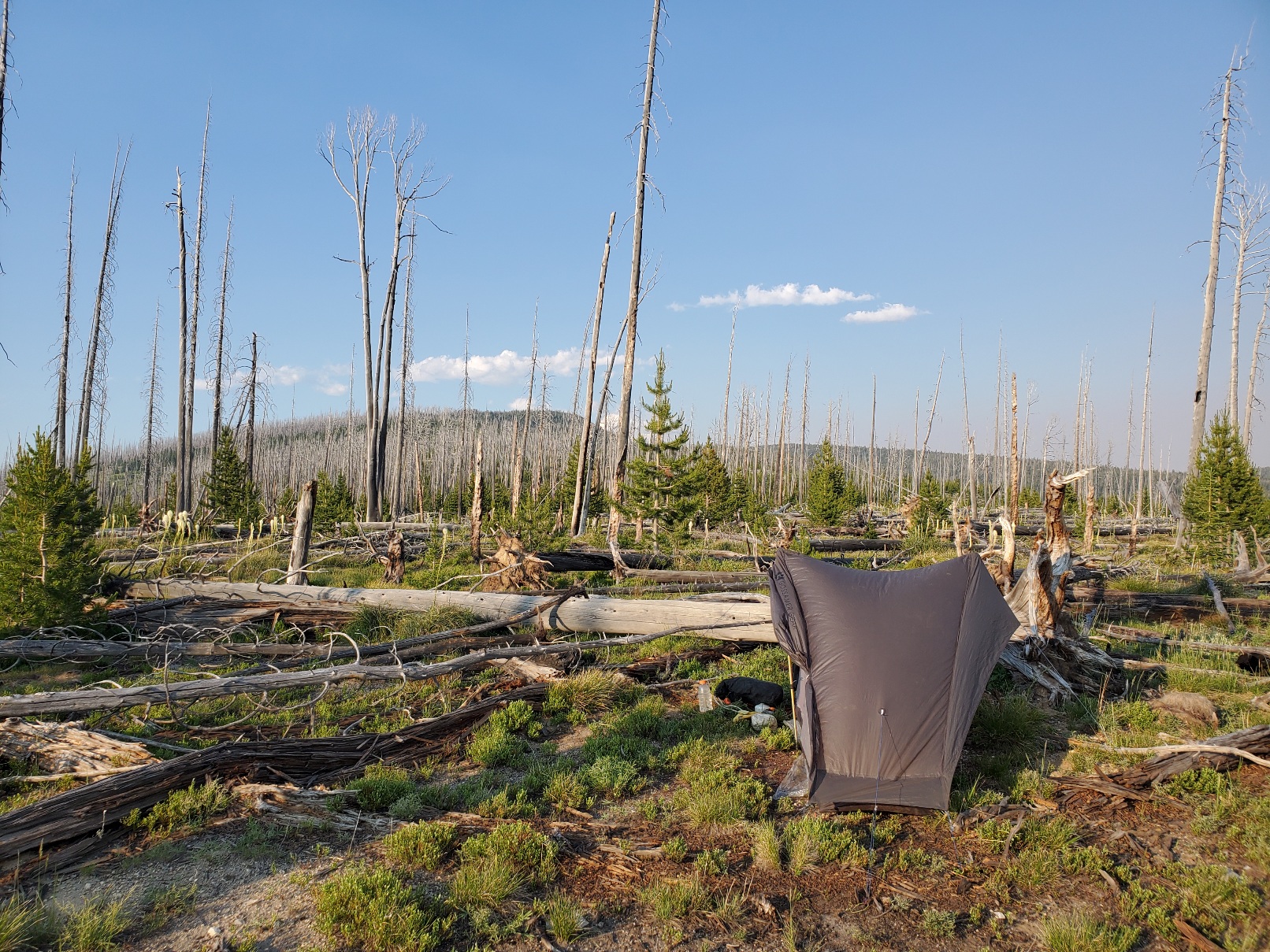
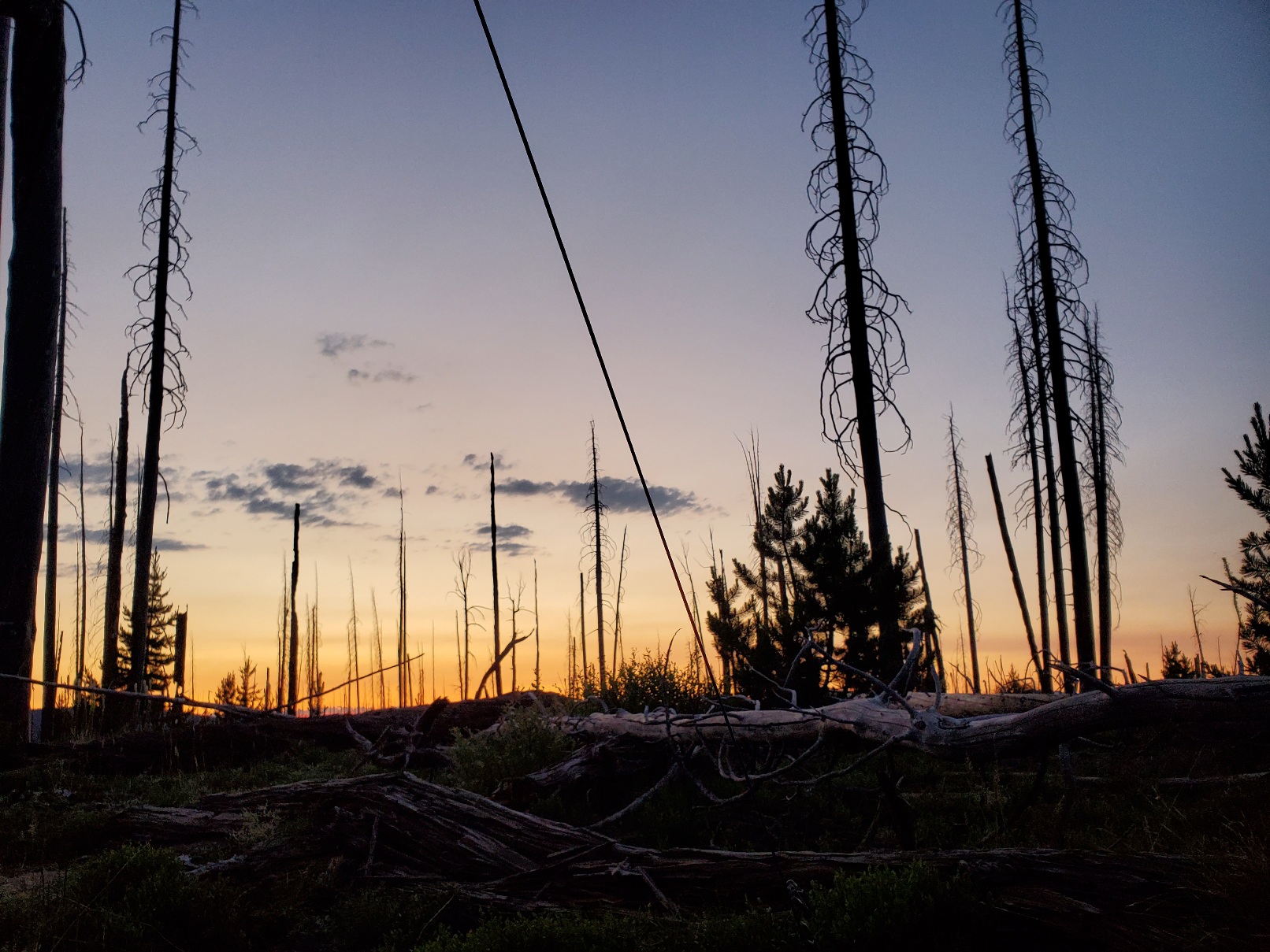
Viewing sunset from my tent.

The trail along there must go somewhere different than my route in ‘96. I never had big water carries except in the Red Basin. Or maybe I just don’t remember because that long ago it wasn’t hard to load up a lot of water and walk. Now it does me in.